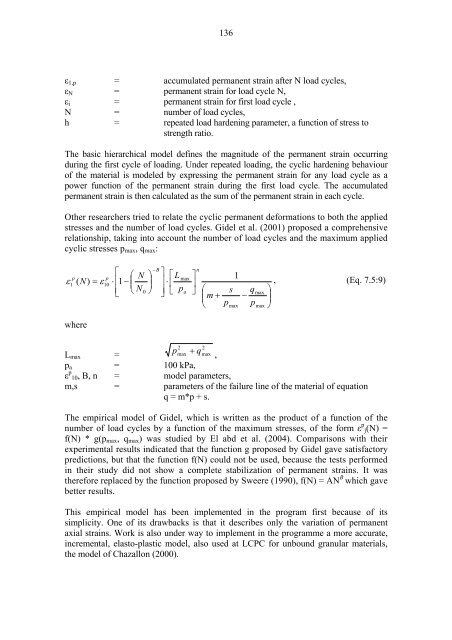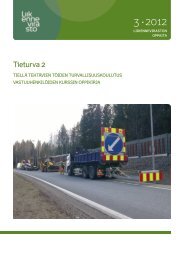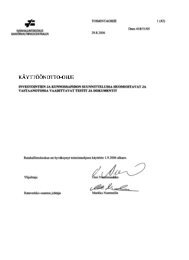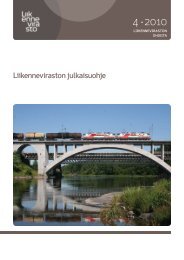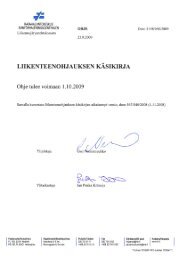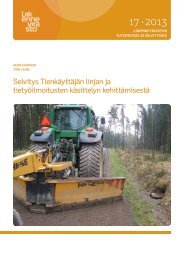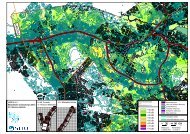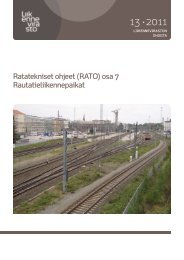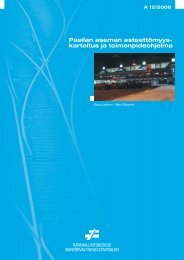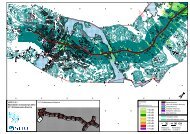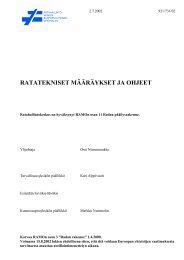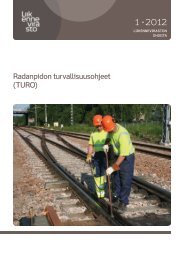Deformation behaviour of railway embankment ... - Liikennevirasto
Deformation behaviour of railway embankment ... - Liikennevirasto
Deformation behaviour of railway embankment ... - Liikennevirasto
You also want an ePaper? Increase the reach of your titles
YUMPU automatically turns print PDFs into web optimized ePapers that Google loves.
136<br />
ε 1,p = accumulated permanent strain after N load cycles,<br />
ε N = permanent strain for load cycle N,<br />
ε i = permanent strain for first load cycle ,<br />
N = number <strong>of</strong> load cycles,<br />
h = repeated load hardening parameter, a function <strong>of</strong> stress to<br />
strength ratio.<br />
The basic hierarchical model defines the magnitude <strong>of</strong> the permanent strain occurring<br />
during the first cycle <strong>of</strong> loading. Under repeated loading, the cyclic hardening <strong>behaviour</strong><br />
<strong>of</strong> the material is modeled by expressing the permanent strain for any load cycle as a<br />
power function <strong>of</strong> the permanent strain during the first load cycle. The accumulated<br />
permanent strain is then calculated as the sum <strong>of</strong> the permanent strain in each cycle.<br />
Other researchers tried to relate the cyclic permanent deformations to both the applied<br />
stresses and the number <strong>of</strong> load cycles. Gidel et al. (2001) proposed a comprehensive<br />
relationship, taking into account the number <strong>of</strong> load cycles and the maximum applied<br />
cyclic stresses p max , q max :<br />
−B<br />
n<br />
⎡ ⎤<br />
p<br />
p<br />
⎛ N ⎞ ⎡ L<br />
max<br />
⎤ 1<br />
ε ⎢<br />
⎜<br />
⎟<br />
1<br />
( N)<br />
= ε10<br />
⋅ 1−<br />
⎥ ⋅ ⎢ ⎥<br />
, (Eq. 7.5:9)<br />
⎢ ⎥ ⎣ ⎦ ⎛<br />
⎞<br />
⎣ ⎝ N<br />
0 ⎠ pa<br />
⎦<br />
s qmax<br />
⎜m<br />
+ −<br />
⎟<br />
⎝ pmax<br />
pmax<br />
⎠<br />
where<br />
L max =<br />
2 2<br />
p<br />
max<br />
+ qmax<br />
,<br />
p a = 100 kPa,<br />
ε p 10, B, n = model parameters,<br />
m,s = parameters <strong>of</strong> the failure line <strong>of</strong> the material <strong>of</strong> equation<br />
q = m*p + s.<br />
The empirical model <strong>of</strong> Gidel, which is written as the product <strong>of</strong> a function <strong>of</strong> the<br />
number <strong>of</strong> load cycles by a function <strong>of</strong> the maximum stresses, <strong>of</strong> the form ε p j(N) =<br />
f(N) * g(p max , q max ) was studied by El abd et al. (2004). Comparisons with their<br />
experimental results indicated that the function g proposed by Gidel gave satisfactory<br />
predictions, but that the function f(N) could not be used, because the tests performed<br />
in their study did not show a complete stabilization <strong>of</strong> permanent strains. It was<br />
therefore replaced by the function proposed by Sweere (1990), f(N) = AN B which gave<br />
better results.<br />
This empirical model has been implemented in the program first because <strong>of</strong> its<br />
simplicity. One <strong>of</strong> its drawbacks is that it describes only the variation <strong>of</strong> permanent<br />
axial strains. Work is also under way to implement in the programme a more accurate,<br />
incremental, elasto-plastic model, also used at LCPC for unbound granular materials,<br />
the model <strong>of</strong> Chazallon (2000).


